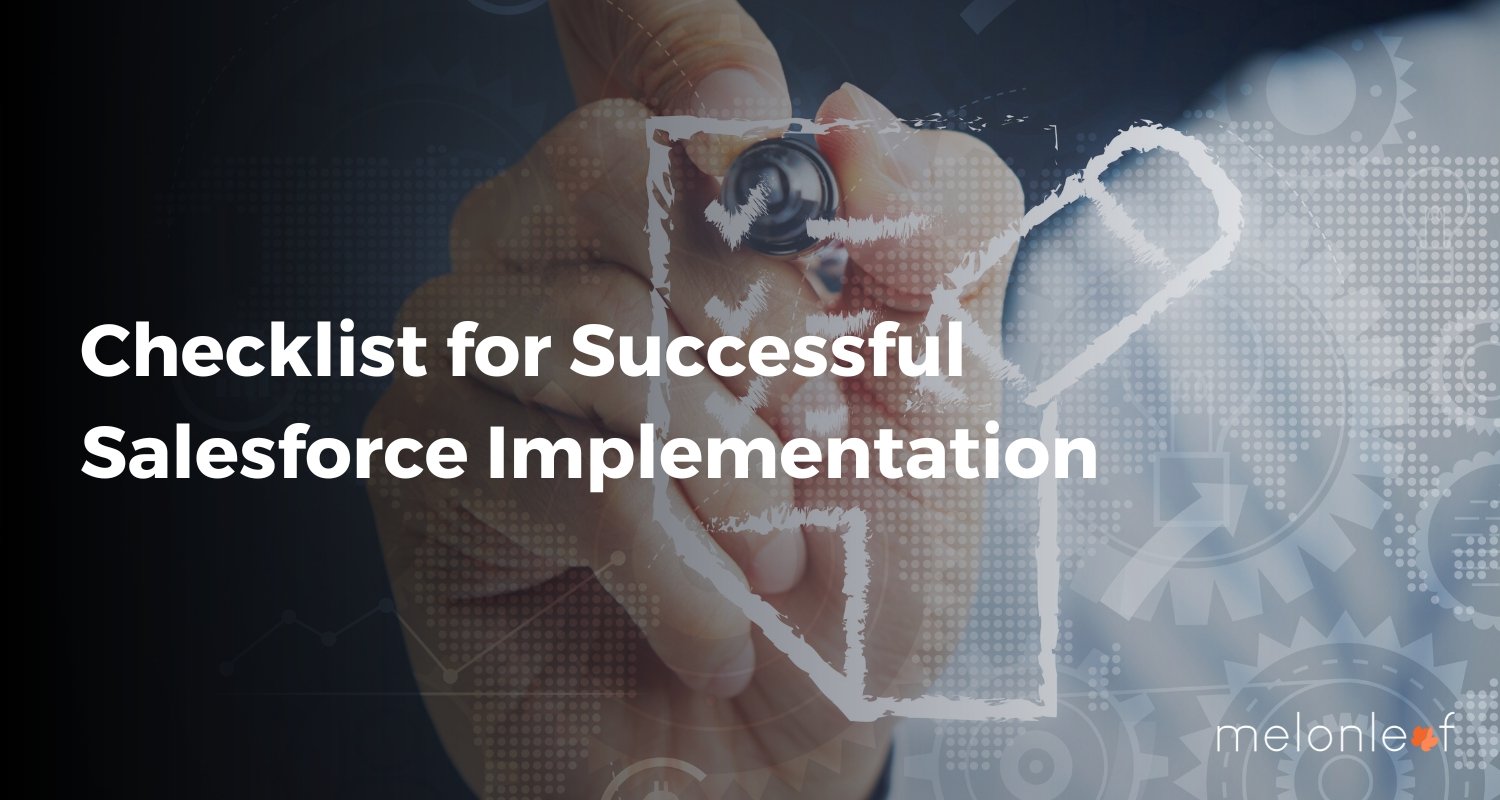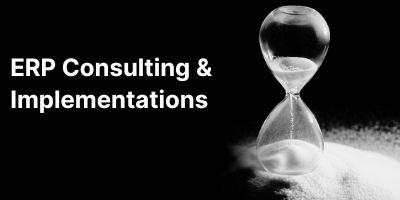
Checklist to a Successful Salesforce Implementation for your Organization in 2023-24
Salesforce, a prominent CRM platform, has transformed the landscape of B2B operations by providing notable advantages such as heightened productivity and enhanced customer experiences.
Realizing the complete potential of Salesforce hinges on a well-executed implementation.
This blog aims to delve into key insights and recommended strategies to guarantee a smooth Salesforce implementation, empowering your business to excel in the current competitive environment.
Furthermore, we will explore practical methods for evaluating the success of your Salesforce journey, facilitating the monitoring of its influence and fostering ongoing enhancements.
To kick things off, let's consider Salesforce's perspective on what constitutes a successful implementation.
Here is Complete Checklist for Successful Salesforce Implementation
1. Thoroughly Assess Business Needs and Objectives
Before diving into the Salesforce implementation process, conduct a comprehensive evaluation of your business requirements and objectives. Understanding these key elements ensures that the platform is tailored to address specific challenges and goals, laying the foundation for a successful implementation.
2. Invest in Adequate Training Programs
Allocate resources for robust training programs to familiarize users with Salesforce functionalities. A well-trained workforce is more likely to embrace the new platform, minimizing resistance and maximizing the benefits of Salesforce. Consider utilizing a combination of in-person sessions, online resources, and hands-on training modules.
3. Customize for User-Friendly Interfaces
Leverage the customization capabilities of Salesforce to create user-friendly interfaces. Tailor the platform to align with the workflow and preferences of your users, promoting a seamless and intuitive experience. A user-centric design contributes significantly to user adoption rates and overall satisfaction.
4. Transparent Communication and Change Management
Establish clear communication channels throughout the implementation process. Address concerns proactively, providing users with a transparent roadmap. Implement change management strategies to help users adapt to the new system, emphasizing the positive impact on their daily tasks and overall efficiency.
5. Encourage Executive Sponsorship
Foster executive sponsorship to demonstrate leadership support for the Salesforce implementation. When leaders actively engage in the transition, it sets a precedent for the entire organization. Executives can lead by example, showcasing the importance of Salesforce adoption and its alignment with organizational goals.
6. Introduce Gamification Elements
Make the learning process engaging by incorporating gamification elements into the training programs. Create a system of rewards and recognition for users who actively participate and contribute to the successful adoption of Salesforce. Gamification not only enhances the learning experience but also encourages continuous engagement.
7. Data Migration with Precision
Approach data migration with meticulous planning and precision. Ensure a smooth transfer of data from legacy systems to Salesforce, minimizing the risk of data discrepancies or loss. A well-executed data migration is essential for maintaining business continuity and preventing disruptions in operations.
8. Establish a Center of Excellence (CoE)
Form a Center of Excellence (CoE) dedicated to managing and optimizing the Salesforce implementation. This cross-functional team can provide ongoing support, address user queries, and stay updated on new Salesforce features. A CoE ensures continuous improvement and keeps the platform aligned with evolving business needs.
9. Regularly Review and Refine Processes
Implement a systematic process of reviewing and refining Salesforce processes. Regularly assess the effectiveness of workflows, identifying areas for improvement or optimization. This iterative approach ensures that Salesforce evolves in tandem with changing business requirements, maximizing its long-term impact.
10. Encourage User Feedback and Involvement
Actively seek feedback from users throughout the implementation and beyond. Create channels for users to voice their opinions, suggestions, and concerns. Involving users in the decision-making process fosters a sense of ownership and cultivates a collaborative environment, enhancing overall user satisfaction.
11. Utilize Analytics for Performance Measurement
Leverage Salesforce analytics tools to measure the performance and impact of the platform. Monitor key performance indicators (KPIs) to assess user adoption rates, system usage, and overall efficiency. Analytical insights provide valuable data for making informed decisions and driving continuous improvement.
12. Emphasize Mobile Accessibility
Acknowledge the growing importance of mobile accessibility in today's business landscape. Ensure that Salesforce is optimized for mobile devices, allowing users to access critical information and perform key tasks while on the go. A mobile-friendly Salesforce enhances user flexibility and contributes to overall user satisfaction.
13. Celebrate Successes and Milestones
Acknowledge and celebrate successes and milestones achieved through the Salesforce implementation. Recognize the efforts of users, administrators, and the implementation team. Celebrating achievements fosters a positive culture around Salesforce adoption and encourages a sense of accomplishment among the entire organization.
Conclusion
In navigating the complexities of Salesforce implementation, user adoption remains the linchpin for success. From aligning with business needs to fostering transparent communication, each step is pivotal. Explore our comprehensive Salesforce Implementation Guide for detailed insights and real-life examples.
Elevate Your Salesforce Experience with Melonleaf
For unparalleled Salesforce services, look no further than Melonleaf. Their expertise in implementation, customization, and ongoing support ensures a seamless journey. Visit Melonleaf to unlock the full potential of Salesforce for your business
FAQ
-
1 What makes user adoption so critical in a Salesforce implementation?
- User adoption is crucial as it determines the success of your Salesforce implementation. When users embrace the platform, it leads to increased productivity, improved customer experiences, and maximized benefits for the organization.
-
2 How can I ensure that my team receives adequate training on Salesforce?
- Invest in comprehensive training programs, combining in-person sessions, online resources, and hands-on modules. Utilize platforms like Salesforce Trailhead for continuous learning and support.
-
3 Why is executive sponsorship emphasized in the blog?
- Executive sponsorship sets the tone for the entire organization. When leaders actively engage in the Salesforce transition, it signals the importance of the platform and encourages widespread adoption among the team.
-
4 What role does data migration play in Salesforce implementation?
- Data migration is critical for business continuity. Meticulously plan the transfer of data from legacy systems to Salesforce to prevent discrepancies and ensure a smooth transition.
-
5 How can Melonleaf assist in Salesforce-related services?
- Melonleaf serves as an ideal partner for Salesforce needs, offering services such as implementation, customization, training, and ongoing support. Their expertise aligns technology with your business goals, ensuring a transformative Salesforce experience. Visit Melonleaf for more information.
Related Posts
15 Ways Custom Integration Boosts Your Business Efficiency
15 Ways Custom Integration Boosts Your Business Efficiency As a visionary CTO or Director of…
15 Tips to Hire the App Development Company
15 Tips to Hire the Ideal App Development Company In the world of AppExchange app…
Key Differences Between Pardot Cloud Vs Marketing Cloud
Key Differences Between Pardot Cloud Vs Marketing Cloud Welcome to the ultimate face-off: Salesforce Pardot…
A Complete Overview to Salesforce Pardot Cloud
A Complete Overview to Salesforce Pardot Cloud In the dynamic landscape of modern business, optimizing…


















